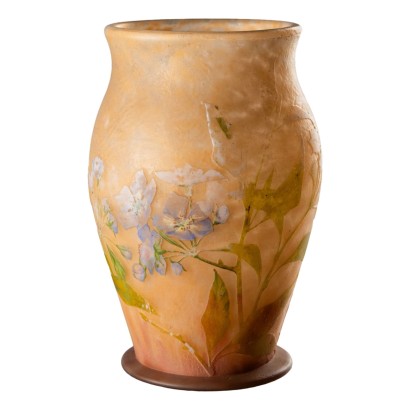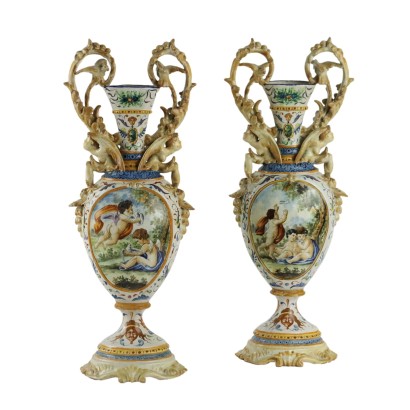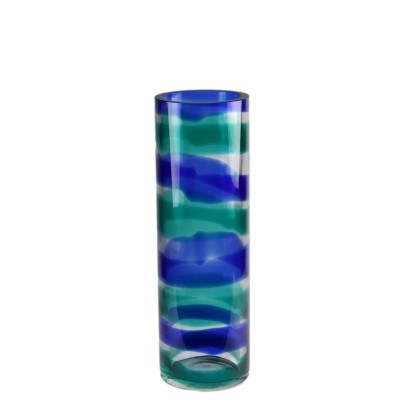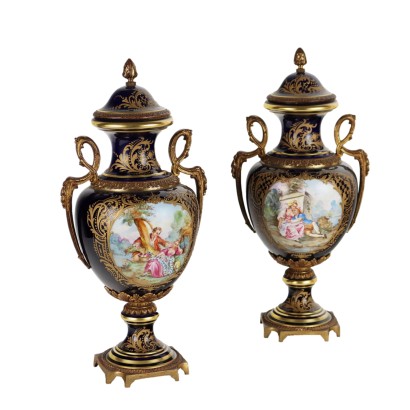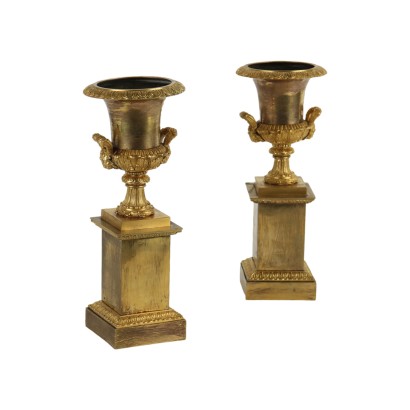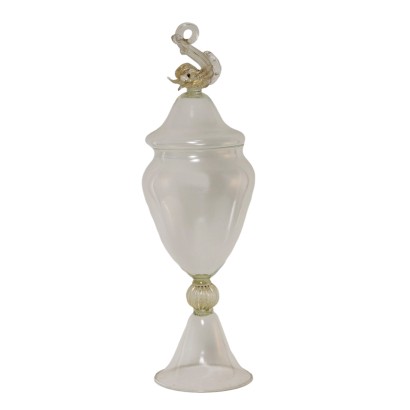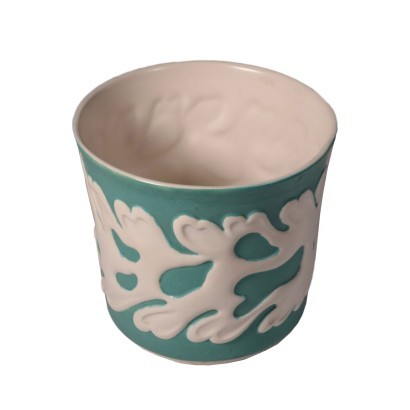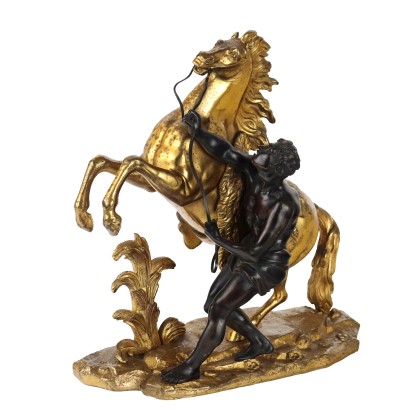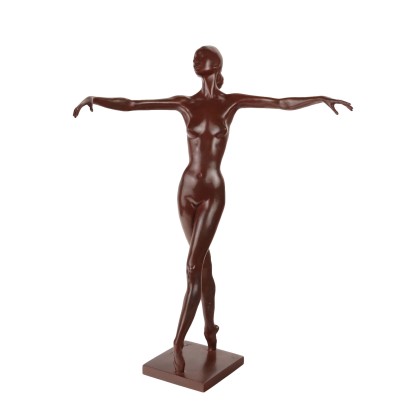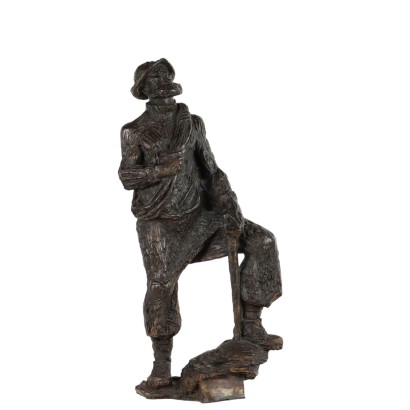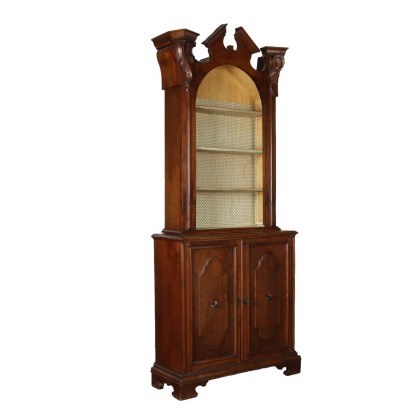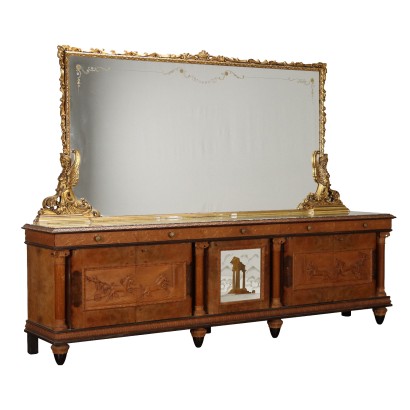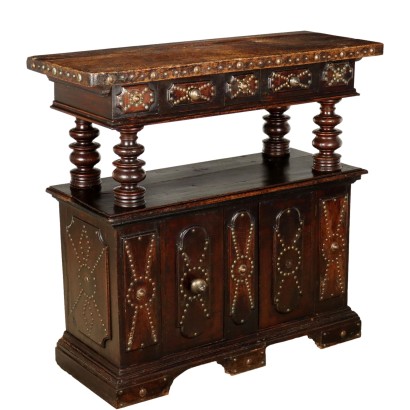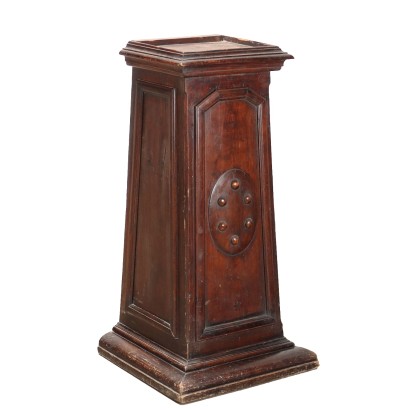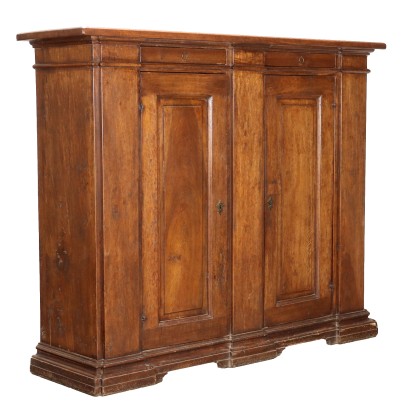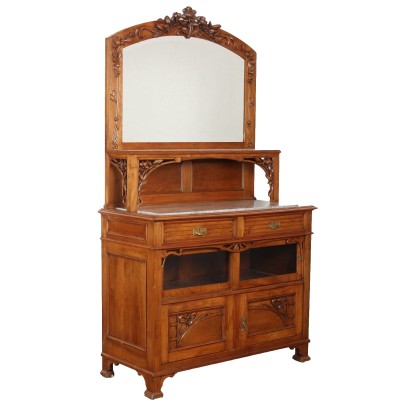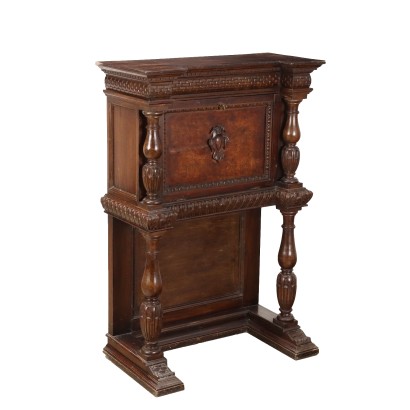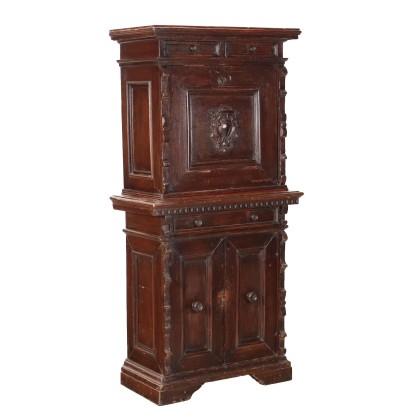Antique Vase Daum Nancy Flower Decorations France 1910 ca. - Nancy 1910 ca
Features
Nancy 1910 ca
Style: Art Nouveau (1890-1920)
Age: 20th Century / 1901 - 2000
Origin: Nancy, France
Description
Colorless glass vase with inclusion of yellow and orange vitreous powder, acid worked with floral decoration finished in enamel. Signature “Daum Nancy” with Lorraine cross acid engraved on the body of the vase.
Product Condition:
Product which due to age and wear requires restoration and re-polishing. We try to present the real state of the furniture as completely as possible with photos. If some details are not clear from the photos, what is stated in the description applies.
Dimensions (cm):
Height: 18
Width: 11
Additional Information
Notes historical bibliographic
Jean Daum (1825-1885), an Alsatian notary, founded the company in 1878, after taking over a glass factory in Nancy which was in terrible economic conditions. Only after his death, his two sons, Auguste and Antonin, gave the company an artistic twist and brought it to success, taking care of its growth during the Art Nouveau period, until it became a leader in the decorated glass sector at the beginning of the twentieth century : Antonin was the main architect, both from an aesthetic point of view and from the point of view of experimentation and technical innovation. In the 1920s, Daum production abandoned the soft shapes of Art Nouveau to give space to a geometric taste, typical of Art Deco. On a technical-stylistic level, it is interesting to underline the technique used to give a "marble" effect to the vase described here, consisting of including powders obtained from pulverized colored glass in the transparent glass, arranging them until the desired color is obtained. This technique represents one of the most original and characteristic processes of Daum production.Style: Art Nouveau (1890-1920)
Historical stylistic period formed from the end of the 19th century (ca. 1890) after the Umbertino style and continued until the First World War.The current was characterized by the floral influence and the soft and curved lines, typical example are the "whiplashes".
The first signs of this new era came from architects such as Hector Guimard (1867-1942) who created numerous buildings and hotels, but also from people such as Arthur Mackmurdo furniture designer and Arthur Liberty industrialist and London merchant of the late 19th century who began to produce furnishing fabrics with floral motifs with soft and sinuous shapes.
The Universal Exhibition of Paris in 1900 was an important point for the development and affirmation of Liberty in the following decade.
Liberty was called in different ways depending on the nation, universally known as Art-Nouveau and it is thought that Arthur Liberty is the origin of the name given in Italy to this beautiful stylistic movement.
The name Art-Nouveau is thought to derive from a shop located in Paris called Maison de l'Art Nouveau which began to show off furniture with a new and innovative design in its windows.
With the end of the First World War, the naturalistic period of Liberty ended and the Art-Decò style appeared, with more rigid and geometric lines.
Find out more about the Liberty style with our insights:
Art Nouveau: birth and development of a style
Milan Liberty between flowers and colors
Carlo Zen's Liberty
Decorative shapes and elegance in an Liberty living room
FineArt: Aeolus and Cupid, Liberty sculpture by Luca Madrassi
FineArt: Nymph and Faun, Liberty sculpture by Giuseppe Siccardi
The Austrian taste of Baroque
Age: 20th Century / 1901 - 2000
20th Century / 1901 - 2000Other customers have searched:
Vaso, barattolo, ciotola, contenitore, recipiente..
Approfondimemti
Per sapere tutto sui vasi, consulta i nostri approfondimenti:
Le ceramiche di Jacob Petit ovvero policromia e originalità
L'origine della Porcellana
Le manifatture di Porcellana
Il dizionario dell'antiquariato – Baccello
Coppia di vasi con figure orientali
Coppia di vasi in ceramica Dagoty, Parigi, 1810 ca.
Coppia di tazze Blue John Regency, Inghilterra XIX secolo
Coppia di vasi bruciaprofumi Imari
Vasi portafiori luminosi, Max Ingrand per FontanaArte
Sull'antiquariato in generale dai un'occhiata anche a:
Classic Monday: da un pezzo dei nostri magazzini alla storia dell'antiquariato
L'antiquariato dalla A alla Z: il Dizionario dell'Antiquariato
Il dizionario dell'antiquariato - Lastronatura
Il dizionario dell'antiquariato - Mascherone
Il dizionario dell'antiquariato - Natura morta
Il dizionario dell'antiquariato - Opificio
Il dizionario dell'antiquariato - Pastiglia
Il dizionario dell'antiquariato - Savonarola
Il dizionario dell'antiquariato - Rosone
Approfondimemti
Per sapere tutto sui vasi, consulta i nostri approfondimenti:Le ceramiche di Jacob Petit ovvero policromia e originalità
L'origine della Porcellana
Le manifatture di Porcellana
Il dizionario dell'antiquariato – Baccello
Coppia di vasi con figure orientali
Coppia di vasi in ceramica Dagoty, Parigi, 1810 ca.
Coppia di tazze Blue John Regency, Inghilterra XIX secolo
Coppia di vasi bruciaprofumi Imari
Vasi portafiori luminosi, Max Ingrand per FontanaArte
Sull'antiquariato in generale dai un'occhiata anche a:
Classic Monday: da un pezzo dei nostri magazzini alla storia dell'antiquariato
L'antiquariato dalla A alla Z: il Dizionario dell'Antiquariato
Il dizionario dell'antiquariato - Lastronatura
Il dizionario dell'antiquariato - Mascherone
Il dizionario dell'antiquariato - Natura morta
Il dizionario dell'antiquariato - Opificio
Il dizionario dell'antiquariato - Pastiglia
Il dizionario dell'antiquariato - Savonarola
Il dizionario dell'antiquariato - Rosone
Product availability
The product can be seen at Milan
Immediate availability
Ready for delivery within 2 working days from ordering the product.



